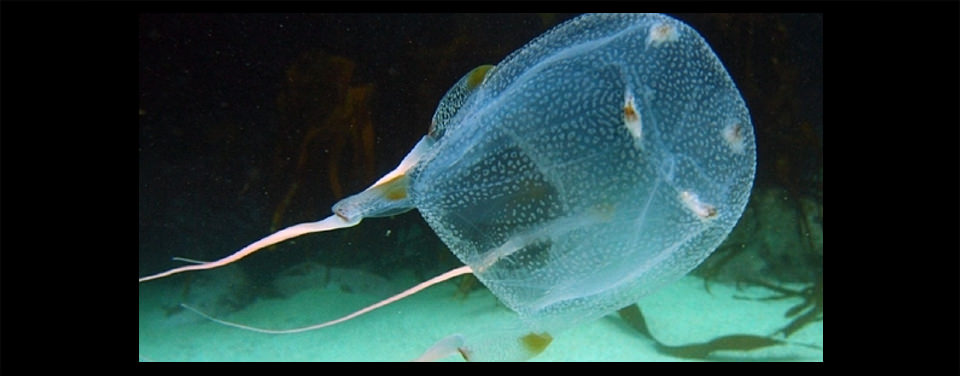What is the most venomous marine animal?
The Australian box jellyfish is considered the most venomous marine animal.

Carybdea branchi, pictured here, is a relative of the Australian box jellyfish (Chironex fleckeri), which is considered the most venomous marine animal. (Image courtesy of Brent Viljoen)
They may not look dangerous, but the sting from a box jellyfish could be enough to send you to Davy Jones's locker-a watery grave, that is.
Box jellyfish, named for their body shape, have tentacles covered in biological booby traps known as nematocysts - tiny darts loaded with poison. People and animals unfortunate enough to be injected with this poison may experience paralysis, cardiac arrest, and even death, all within a few minutes of being stung. But don’t choose the mountains over the ocean just yet. Of the 50 or so species of box jellyfish, also called sea wasps, only a few have venom that can be lethal to humans.
While box jellyfish are found in warm coastal waters around the world, the lethal varieties are found primarily in the Indo-Pacific region and northern Australia. This includes the Australian box jellyfish (Chironex fleckeri), considered the most venomous marine animal. Chironex fleckeri is the largest of the box jellyfish, with body sizes reaching up to one foot in diameter and thick, bootlace-like tentacles up to 10 feet long.
Box jellyfish have traits that set them apart from other jellyfish. Most notably, box jellyfish can swim—at maximum speeds approaching four knots—whereas most species of jellyfish float wherever the current takes them, with little control over their direction. Box jellyfish can also see. They have clusters of eyes on each side of the box. Some of these eyes are surprisingly sophisticated, with a lens and cornea, an iris that can contract in bright light, and a retina.
Their speed and vision leads some researchers to believe that box jellyfish actively hunt their prey, mainly shrimp and small fish.
Search Our Facts
Get Social
More Information
Last updated: 06/16/24
Author: NOAA
How to cite this article